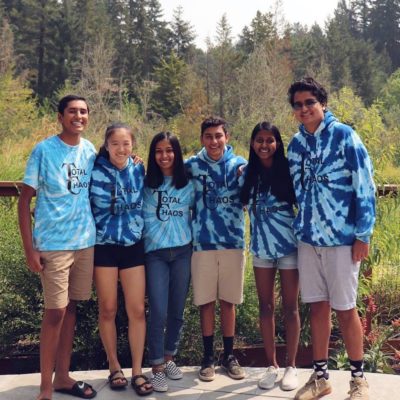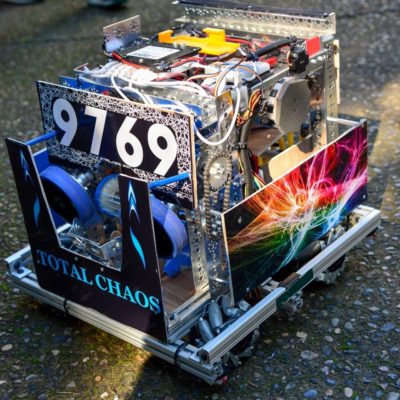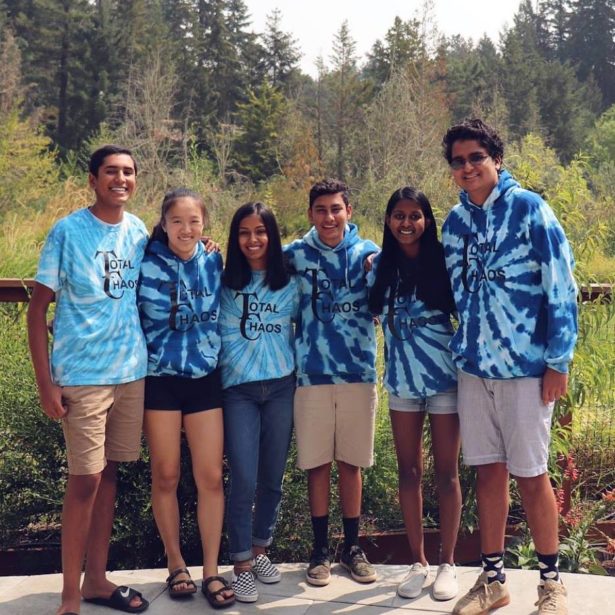 Total Chaos is Portland, OR-based FIRST Tech Challenge (FTC) team composed of high school students: Anya Bohra, Catherine Lee, Sneha Jeysingh, Shreyes Joshi, Vivek Kumar, and Krish Aditya. The team is passionate about building robots and spreading the knowledge of STEM in communities.
Total Chaos is Portland, OR-based FIRST Tech Challenge (FTC) team composed of high school students: Anya Bohra, Catherine Lee, Sneha Jeysingh, Shreyes Joshi, Vivek Kumar, and Krish Aditya. The team is passionate about building robots and spreading the knowledge of STEM in communities.
Work smarter not harder is the mantra of our team that drives us to achieve results with limited resources. We have embodied this approach by building high performing robots and competing at state and world championships organized by FTC. For Inspiration and Recognition of Science and Technology (FIRST) is a team-based robotics program created for students to inspire them to pursue STEM. The goal of FTC is to reach young students with a lower-cost and accessible means to discover the life-long benefits of STEM. In the FTC program, teams build, program, and operate robots that compete in a head-to-head challenge. The challenge changes every year with new elements to ensure constant learning.
Efficiency is Critical
With a very small team, by FTC standards, of only six members, efficiency was crucial in developing a functional and competitive robot within the 4 month season. As our team gained experience, we refined our work ethic to complete all of our tasks in a timely manner. We found it necessary to develop a structure that would leverage modular design, effective documentation and utilize the strengths and interests of every team member.
A “Handy” Model
We’ve found that the Athena Culture of Charles Handy’s management theory accomplishes those goals best. The Charles Handy Model is small-team based and it centers around flexibility and adaptability. We used this model to make our work process into a task based team where we would make individuals in charge of certain tasks which would all be put together in the end. While utilizing the Charles Handy Model, the robot’s modular design allowed changes to certain elements of the robot in a fast and efficient manner. It specifically allowed us to isolate problems, enabling us to improvise and fix parts or sub-assemblies of our robot without taking the robot apart.
Reliance on Documentation
This approach provided us with better predictability of effort and time for changes. Performance expectations for the robot increase at every stage of the tournament’s elimination rounds, which means that constant improvements need to be made. The use of effective documentation allowed us to use past robot performance, previous iterations, stress tests, and test runs to iterate our robot’s design. Following the Athena Culture enabled our team to design, build, and program every sub-assembly iteration in parallel.
 Adaptable Framework
Adaptable Framework
In order to develop a robust and high performing robot, we also ensured that our software was adaptable to the new capabilities and rapid environment changes while ensuring high reliability. Software quality is very crucial in controlling robot hardware while interacting with the physical world to accomplish a set of tasks. The software needs to tackle sensor errors, software exceptions, robot hardware failures and uncertainties from the external environment. The team had to go through several challenges to achieve a culture of software quality for an Android platform robot. We used Machine Learning to minimize the effects of variability in sensors and physical world data to make the right decisions in different situations. We used tensor flow machine learning to increase the reliability and consistency of our robot.
At the PNSQ conference, we are sharing our experience with Athena Culture and focus on software quality to achieve desired goals efficiently and effectively. Other individuals and teams will be able to benefit from our discoveries.




